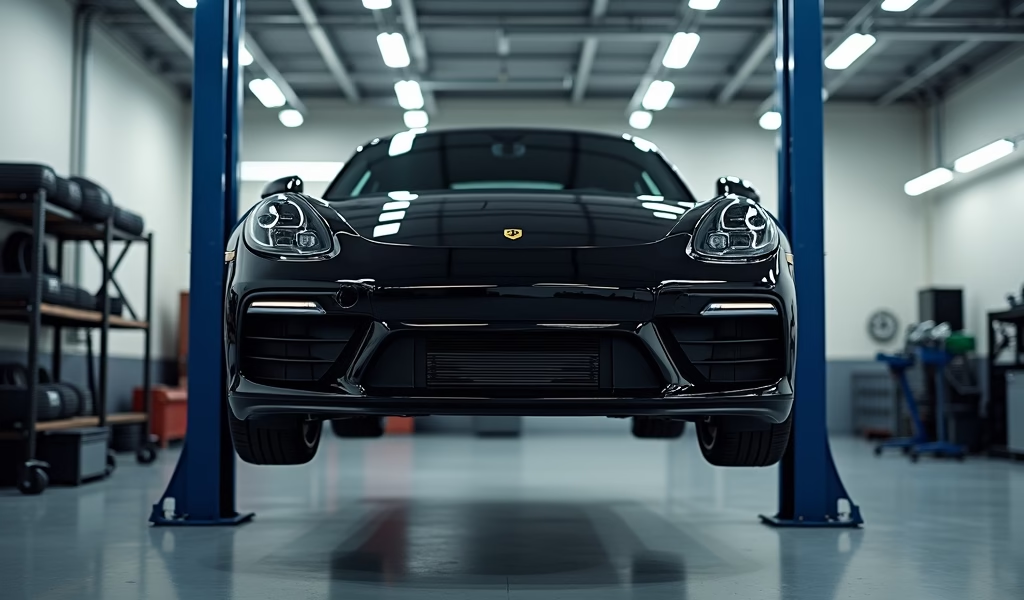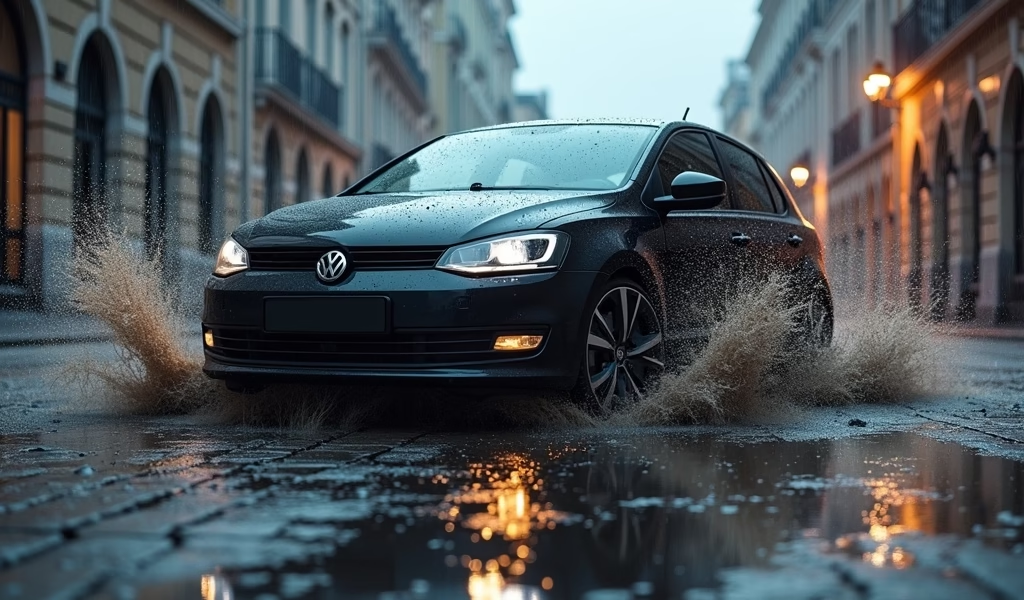Overview
This article provides five essential tips for front-wheel drive vehicle owners: proper tire maintenance with specific rotation patterns, winter driving techniques that leverage FWD’s natural advantages, managing torque steer during acceleration, optimizing driving techniques for FWD dynamics, and performing FWD-specific maintenance to prevent costly repairs. The guide emphasizes that understanding FWD’s unique characteristics helps drivers maximize performance, handling, and longevity in all driving conditions.
Table of Contents
- Understanding Front Wheel Drive: The Basics
- Essential Tip #1: Proper Tire Maintenance for FWD Cars
- Essential Tip #2: Mastering Winter Driving Techniques
- Essential Tip #3: Managing Torque Steer Effectively
- Essential Tip #4: Optimizing Your Driving Technique
- Essential Tip #5: Critical Maintenance for FWD Systems
- Conclusion: Making the Most of Your FWD Vehicle
- Frequently Asked Questions
Understanding Front Wheel Drive: The Basics
As a mechanic with over 20 years of experience, I’ve seen how front wheel drive cars have revolutionized modern driving. Unlike their rear-wheel counterparts, FWD vehicles deliver power through the same wheels that steer the car. This seemingly simple design difference creates a cascade of performance characteristics that affect everything from fuel economy to handling in poor weather.
Front wheel drive systems have become the standard for most passenger vehicles today, and for good reason. They offer better traction in slippery conditions, improved fuel efficiency, and create more interior space by eliminating the need for a transmission tunnel running through the cabin.
Yet many drivers don’t realize they should treat their FWD vehicles differently than RWD cars. The unique configuration requires specific maintenance approaches and driving techniques to maximize performance and longevity. Whether you’re commuting through rush hour traffic or navigating a snow-covered mountain pass, understanding these five essential tips will transform your driving experience.
Essential Tip #1: Proper Tire Maintenance for FWD Cars
Your front tires in a what is front wheel drive vehicle do triple duty – they steer, brake, and put power to the pavement. This workload means they wear differently than rear tires, requiring special attention.
The Critical FWD Rotation Pattern
In my shop, I recommend the “forward cross” rotation pattern for FWD vehicles – move the front tires straight to the rear, and the rear tires to the opposite front positions. This pattern ensures even wear and extends tire life significantly. Most FWD cars should have tires rotated every 5,000-7,000 miles.
When I check a customer’s tires, I often find the fronts worn 30-40% faster than the rears. This uneven wear pattern is normal for FWD cars but needs to be managed through regular rotations.
Pressure Perfection
Monthly tire pressure checks are non-negotiable for FWD cars. Underinflated front tires cause:
- Sluggish steering response
- Premature outer edge wear
- Decreased fuel economy
Always follow your owner’s manual for pressure recommendations, not the maximum PSI listed on the tire sidewall. The difference might seem small, but it significantly impacts handling and tire life.
Replacement Strategy
When budget constraints prevent replacing all four tires at once, prioritize the front pair. However, ideally, you want matching tires at all four corners for balanced handling. Start checking tread depth once you’ve passed 15,000 miles, and consider replacement when fronts reach 4/32″ of tread – well before the legal minimum.
According to NHTSA tire safety guidelines, driving on worn tires dramatically increases stopping distance, especially on wet roads. Don’t push your luck with worn front tires on a FWD car – they’re your primary connection to the road.

Essential Tip #2: Mastering Winter Driving Techniques
When winter arrives, FWD cars have a natural advantage that I’ve seen help countless customers navigate safely through snow and ice. The weight of the engine sits directly over the driving wheels, providing better initial traction than rear-wheel drive vehicles.
Leveraging the Weight Distribution
Think of your FWD car like a sled dog pulling a sled – the weight and power work together in the same direction. This design gives FWD vehicles a leg up when starting on slippery surfaces, but only if you use gentle acceleration.
When starting from a stop on snow:
- Apply throttle gradually and smoothly
- If wheels spin, ease off rather than pressing harder
- In manual transmission cars, starting in second gear can reduce wheel spin
I’ve pulled too many cars from ditches because drivers thought more gas was the answer to slipping wheels. Remember: gentle inputs are your friend in winter conditions.
Winter Tire Selection
Even with FWD’s inherent winter advantages, proper winter tires transform your car’s capability. I’ve seen dramatic improvements in braking distance – up to 30% shorter stops on ice with proper winter rubber compared to all-seasons, according to tests from Tire Rack’s extensive testing.
When selecting winter tires:
- Look for the “Three-Peak Mountain Snowflake” symbol
- Consider narrower profiles for better snow penetration
- Always install a full set of four matching winter tires
I cannot stress this enough: even with FWD, winter stopping performance depends on having appropriate tires at all four corners. Half measures don’t work when it comes to winter safety.
Essential Tip #3: Managing Torque Steer Effectively
If you’ve ever felt your steering wheel tug to one side during hard acceleration, you’ve experienced torque steer – a phenomenon almost exclusive to FWD vehicles. As a mechanic, I’ve helped many customers understand and manage this quirk of front wheel drive vs all wheel drive systems.
What Creates That Tugging Sensation
Torque steer occurs when power flows unevenly through your front wheels during acceleration. This can happen due to:
- Uneven-length drive axles (a common design compromise)
- Different angles between the drive axles
- Variations in traction between the front tires
- High torque overwhelming the steering geometry
The effect is particularly noticeable in higher-horsepower FWD cars – I’ve seen it dramatically in turbocharged models where sudden power delivery amplifies the effect.
Practical Handling Techniques
Rather than fighting against torque steer, I teach customers to adapt their driving technique:
- Keep both hands firmly on the wheel at 9 and 3 o’clock during acceleration
- Apply throttle progressively rather than stabbing at it
- Straighten the wheels before heavy acceleration
- Anticipate the pull and make small corrections
One customer described torque steer as “the car having a mind of its own.” I explained it’s more like having a strong-willed dance partner – once you learn to anticipate the movements, you can work together smoothly.
Mechanical Solutions
For those seeking to reduce torque steer through mechanical means, consider:
- A limited-slip differential to equalize power distribution
- Stiffer engine mounts to reduce engine movement during acceleration
- Performance alignment settings that minimize the effect
- Equal-length aftermarket axles (for modified vehicles)
In my years at the shop, I’ve seen dramatic improvements in torque steer management through these modifications, especially in higher-powered FWD vehicles where the effect is most pronounced.
Essential Tip #4: Optimizing Your Driving Technique
FWD cars handle differently than their rear-wheel counterparts, and understanding these differences can dramatically improve your driving experience. I’ve helped track day enthusiasts and daily commuters alike adapt their techniques to get the most from their front-drivers.
Managing the Front-End Weight Dance
FWD cars tend naturally toward understeer – where the front tires lose grip first, causing the car to push toward the outside of a turn. This isn’t a defect; it’s a safety feature that makes cars more predictable for average drivers. To work with this characteristic:
- Complete your braking before entering corners
- Once committed to a turn, gradually reapply throttle
- Use slight throttle lifts to tighten your line if needed
One track day client complained his FWD car wouldn’t “rotate” like his friend’s RWD sports car. After adjusting his technique, he discovered the unique rhythm of FWD handling – brake early, turn in, then use throttle to stabilize the car through the exit.
The Throttle as a Stabilizing Tool
In FWD cars, throttle application has a counterintuitive effect compared to RWD vehicles:
- Adding throttle in a turn generally straightens your path
- Slightly reducing throttle can help the car rotate around a corner
- Smooth, progressive throttle maintains balance
I often use the analogy of a water-skier being pulled by a boat. The boat (your front wheels) pulls the skier (the rear of the car) along. When the boat turns and accelerates, the skier naturally wants to straighten the line.
Wet Weather Prowess
FWD cars often excel in wet conditions when properly driven:
- Reduce speed more than seems necessary
- Avoid standing water, especially with the front wheels
- Apply all inputs (steering, braking, acceleration) with extra smoothness
The weight over the driving wheels gives FWD cars a natural advantage in rain and light snow, but only if you drive with the appropriate restraint. As I remind my customers, “Physics doesn’t care how good you think you are – respect the limits.”

Essential Tip #5: Critical Maintenance for FWD Systems
After 20 years in the shop, I’ve seen how neglected maintenance can turn minor issues into major repairs. The unique configuration of FWD drivetrains requires specific attention to components that aren’t present or aren’t as stressed in other layouts.
CV Joint and Axle Care
Constant Velocity (CV) joints connect your transmission to the wheels, allowing power transfer even as the suspension moves and wheels turn. Signs of failing CV joints include:
- Clicking noises when turning (especially pronounced in tight turns)
- Grease splatters on the inside edge of the front tires
- Vibration during acceleration that increases with speed
I recommend inspecting CV boots (the rubber coverings protecting the joints) during every oil change. Once a boot tears, dirt and moisture quickly destroy the joint, turning a $20 boot repair into a $300+ axle replacement.
Transmission Fluid Requirements
The transaxle in FWD cars combines transmission and differential functions in one unit, operating under significant stress. Regular fluid changes are crucial:
- Check and replace fluid according to manufacturer specifications (usually every 30,000-60,000 miles)
- Use only the specific fluid type recommended for your vehicle
- Consider more frequent changes if you regularly tow or drive in hilly terrain
I’ve rebuilt too many transmissions that failed prematurely because owners believed the “lifetime fluid” marketing claims. Trust me – there’s no such thing as lifetime fluid in a hard-working transaxle.
Alignment Considerations
The weight distribution and design of FWD cars make proper alignment crucial:
- Front wheel alignment affects both steering response and power delivery
- Incorrect alignment accelerates tire wear and reduces fuel economy
- Consider alignment checks after hitting significant potholes or curbs
Pay special attention to unusual tire wear patterns – they’re your car’s way of telling you something’s wrong. Feathered wear on front tires often indicates alignment issues that, if caught early, can save hundreds in premature tire replacements.
Conclusion: Making the Most of Your FWD Vehicle
Front wheel drive has become the dominant configuration in modern cars for good reasons – better packaging efficiency, improved traction, and cost-effectiveness. By understanding and adapting to its unique characteristics, you can enjoy thousands of trouble-free miles.
The five tips we’ve covered form a comprehensive approach to getting the most from your FWD vehicle:
- Proper tire maintenance with specific rotation patterns
- Winter driving techniques that leverage FWD’s natural advantages
- Managing torque steer for smoother acceleration
- Optimized driving techniques that work with FWD dynamics
- FWD-specific maintenance to prevent costly repairs
Remember, your front wheels carry much of the burden in a FWD car. By giving them the attention they deserve, they’ll continue pulling you forward through whatever conditions life’s road presents. A little knowledge and preventive care go a long way toward ensuring your FWD car delivers reliable performance for years to come.
After working on thousands of vehicles over my career, I’ve developed a deep appreciation for well-maintained front-wheel drive systems. They may lack the performance pedigree of some RWD sports cars, but for real-world driving in all conditions, a properly maintained FWD car is hard to beat for practical, reliable transportation.
Frequently Asked Questions
Are front wheel drive cars good in snow?
Yes, FWD cars typically perform well in snow due to the engine weight directly over the driving wheels. They provide better initial traction than rear-wheel drive vehicles, though all-wheel drive offers the best overall winter performance.
Why do front wheel drive cars have torque steer?
Torque steer happens because of uneven power delivery through the two front wheels, caused by differences in driveshaft length, steering geometry, and weight transfer during acceleration. Higher-powered FWD cars experience more pronounced torque steer effects.
How often should I rotate tires on a front wheel drive car?
Rotate tires on a FWD car every 5,000-7,000 miles to ensure even wear. Front tires wear 30-40% faster than rear tires in FWD vehicles, making regular rotation essential for maximum tire life.
Do front wheel drive cars wear out brakes faster?
Front brakes typically wear faster in all cars since they handle 60-80% of braking force, but FWD cars may experience slightly accelerated front brake wear. The additional weight of the drivetrain components over the front wheels increases the load on front brakes.
Is FWD or RWD better for performance driving?
RWD generally offers better performance driving characteristics with superior weight distribution and handling balance. However, FWD can be very capable with proper driving technique, and modern FWD performance cars use technology like limited-slip differentials to minimize traditional FWD handling limitations.

